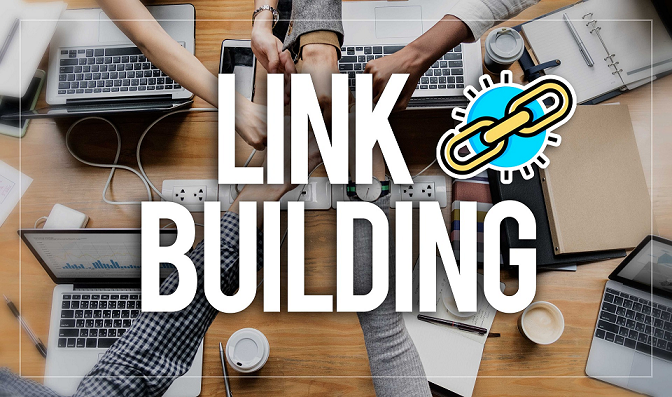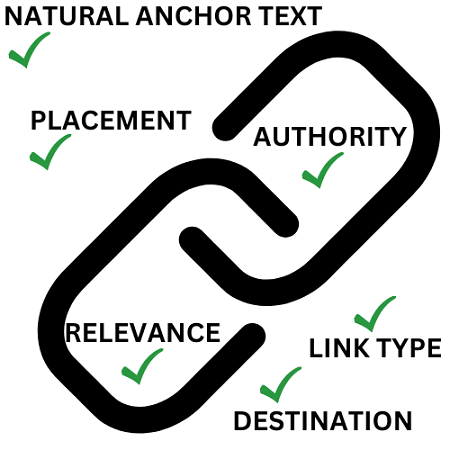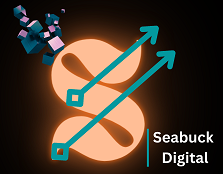I. Introduction
Are you new to SEO? This article will help you to learn about link-building if you are new to the subject of SEO.
The phrase “link-building” has undoubtedly been bandied around quite a bit if you’re just getting started in the area of search engine optimization. But what is link-building exactly, and why is it so crucial? We’ll provide you with a beginner’s introduction to link-building in this article and demonstrate how to get going in the correct direction.

A. The definition of link-building
So, what is link-building, anyway? Link-building is the method or practice of getting other websites to link back to your website. Why is this important? Well, search engines like Google use links as a way to determine the authority and relevance of a website. In other words, if you have more high-quality links then your chances to go to the top of the search engine results pages (SERPs) for your target keywords increase.
B. Link-building basics
Now that you are aware of what link-building is and its significance, let’s discuss some fundamentals. The technical term for a link is a hyperlink, therefore let’s first examine its structure.
1. The anatomy of a hyperlink
The fundamental steps in creating a link are: By clicking a link, you’re instructing your browser where to go next by following a certain set of instructions. There are four sections to these instructions:

1.1. Start of link tag
This is the beginning of the code that creates the link. It looks like this: <a>
1.2. Link referral location
This is the URL of the page that the link is pointing to. It looks like this: href=”https://www.google.com”
1.3. Visible/anchor text of a link
This is the text that you see on the screen that you can click on. It looks like this: Click here!
1.4. Closure of link tag
This is the end of the code that creates the link. It looks like this: </a>
So, when you put all of these parts together, you get a complete hyperlink that looks like this:
<a href=”https://www.google.com”>Click here!</a>
2. What is Backlink?
Link-building is the process or method of acquiring hyperlinks from other websites to your website. These links are commonly known as backlinks. The more high-quality backlinks a website has, the more valuable it appears to search engines like Google. The idea behind link-building is to increase the visibility and ranking of a website in search engine results pages (SERPs) by increasing its authority and credibility.
3. Why is link-building important?
Link-building is a critical part of any successful SEO strategy. Search engines like Google use links to evaluate the relevance and authority of a website. A website is more likely to be regarded as an authority in its industry the more high-quality backlinks it has. This, in turn, increases its visibility in SERPs, leading to increased traffic and potential customers. In a nutshell, link-building helps your website stand out from the crowd and attract more natural traffic.
4. Links aren’t the answer to everything
Link-building is an essential component of SEO. However, it’s important to remember that search engines don’t use link-building as the only factor in website ranking. The ranking of a website is also influenced by other elements, including technical SEO, user experience, and content quality. Please note that all links are not created equal. When a website-A gets a backlink from another website-B then its value is determined by the authority and importance of website-B. As a result, link-building can unquestionably increase a website’s exposure and rating. It should be considered as a component of a holistic SEO plan rather than the only way to enhance a website’s performance.
II. How to build links

Let’s discuss link-building strategies now that you are aware of their significance. You can obtain backlinks to your website using a variety of tactics. Some of the most typical strategies to build links are listed below:
A. Adding links
Mentioning your website to online directories, social networks, and other related websites is one of the easiest ways to develop links. Here are a few focused techniques you can use:
1. Business directory submissions
Submitting your website to online business directories is a quick and easy way to get backlinks. Look for directories that are relevant to your industry and submit your website to them. Some popular directories to consider include Yelp, Google My Business, and Yellow Pages.
2. Social profile creation
By establishing profiles on social networking websites like LinkedIn, Facebook, and Twitter, you can increase your link popularity. In your profile bio and any pertinent contributions you make, be sure to provide a link to your website.
3. Blog commenting
Leaving comments on relevant blog posts can also help you build backlinks. Look for blogs that are related to your industry or niche and leave thoughtful comments with a link back to your website.
4. Posting to forums, communities, and Q&A sites
Posting on forums, online communities, and Q&A sites like Quora can also help you build backlinks. Look for forums and communities that are relevant to your industry and contribute helpful and insightful content. Make sure to include a link to your website in your signature or profile.
5. Creating job search listings.
If your business offers job listings, consider posting them on relevant job search websites. This can help you build backlinks and attract potential employees at the same time. Some popular job search websites to consider include Indeed, Glassdoor, and LinkedIn Jobs.
You can improve your website’s reputation and visibility in search engine results pages by adding links to the above-mentioned websites or similar websites.
But keep in mind that not all links are created equally; for optimal results, concentrate on obtaining high-quality backlinks from reliable sources.
B. Asking for links
Another way to build links is by asking for them. This can be a bit more time-consuming than simply adding links to directories. However, this process is an effective way to get high-quality backlinks. Here are some specific strategies to try:
1. Guest blogging
Guest blogging engages in writing an article for a different website in your industry or niche. In exchange, you can usually include a link back to your website in your author bio. Look for websites that accept guest posts and pitch them on a relevant topic.
2. Email outreach
Email outreach involves reaching out to website owners or bloggers in your industry and asking them to link to your website. This can be accomplished through a personalized email. Yet, it’s crucial to verify that you’re contacting the appropriate parties and that your request is pertinent and worthwhile.
3. Skyscraper technique
The Skyscraper Technique involves finding content in your industry that is already popular and creating a piece of content that is even better. You can ask websites that have connected to the original content to link to your updated and enhanced version after you have developed the content.
4. Link inserts
Link inserts involve finding relevant websites or blog posts and reaching out to the owner to see if you can add a link to your website within the existing content.
5. Ego bait
Ego bait involves creating content that flatters or features other industry experts or businesses. Then, you can reach out to those experts or businesses and ask them to link to your content.
6. Testimonials and case studies
Consider contacting the business to submit a testimonial or case study if you’ve utilized a product or service and had a favorable experience. You can frequently obtain a backlink to your website in exchange.
7. Link exchanges
Link exchanges involve partnering with another website to exchange links. Yet, it’s crucial to confirm that the website you’re collaborating with is reliable and pertinent to your industry.
8. Resource page link-building
Resource page link-building involves finding relevant resource pages and reaching out to the website owner to request a link to your website be added.
9. Broken link-building
Broken link-building engages in finding broken links on different websites and suggesting your website as a replacement.
10. Image link-building
Image link-building involves creating and sharing high-quality images that other websites may want to use on their websites. In exchange for sharing the image, you can ask for a link back to your website.
11. Unlinked brand mentions
Unlinked brand mentions involve finding instances where your brand has been mentioned online but not linked to. After confirming the identity, you can contact the website’s owner and request that they include a link to your website.
12. Link moves
Link moves involve finding instances where your website has been linked to from a page that is no longer active or relevant. The website owner can then be contacted and asked to move the link to a more appropriate page on their website.
13. Visual assets (like infographics)
Creating high-quality infographics or other visual assets can be a great way to attract backlinks. Ask websites that might find your infographic valuable to link to it by contacting them.
14. Case studies
Case studies can also be a great way to attract backlinks. If you’ve had a particularly successful project or campaign, consider creating a case study and reaching out to relevant websites to ask for a link.
15. Original research and data
One effective way to build links is by conducting original research and sharing the data with others in your industry. This can involve conducting surveys, collecting data from existing sources, or analyzing trends and patterns in your field.
By creating and sharing this type of content, you can establish yourself as an authority in your niche and attract links from other websites looking to cite your research. Charts and infographics may be made using the data, and these visual assets are extremely shareable on social media and other channels.
16. HARO and journalist requests or Become a Source
Help a Reporter Out (HARO) is a platform that connects journalists with sources for their stories. By signing up as a source on HARO, you can receive requests from journalists looking for experts to interview on various topics related to your industry.
Responding to these requests and providing valuable insights can not only help you gain exposure for your business but also earn you links from high-authority news outlets and websites.
In addition to HARO, some other similar platforms, and services connect journalists with sources, so it’s worth exploring these options and considering how you can position yourself as a valuable resource for journalists and media outlets.
17. PR
Public relations (PR) can also be an effective strategy for link-building. By earning media coverage for your business, you can attract links from high-authority publications and websites.
To do this, you’ll need to develop compelling stories and pitches that are relevant and interesting to journalists and media outlets. This can involve highlighting unique aspects of your business, sharing newsworthy developments, or positioning yourself as an expert on a particular topic.
By building relationships with journalists and media outlets and consistently pitching new and relevant stories, you can increase your chances of earning media coverage and valuable links for your business.
C. Buying links
Buying links is a practice that involves paying for links to your website from other sites. Although it would appear to be a simple approach to create connections quickly, it’s crucial to remember that Google and other search engines view this as a violation of their policies.
Purchasing links can result in penalties and hurt your website’s search engine rankings, so it’s generally not recommended as a link-building strategy.
D. Earning links
Earning links involves creating high-quality content and resources that other websites naturally want to link to. This can involve creating valuable blog posts, infographics, whitepapers, or other types of content that provide unique insights or information.
By focusing on creating valuable content and building relationships with other websites and influencers in your industry, you can attract links naturally over time. This approach requires patience and consistency, but it can result in more sustainable and long-lasting links that provide real value to your website’s search engine rankings.
E. Bonus: Preserving links
Once you’ve built a solid backlink profile, it’s important to preserve those links over time. This involves monitoring your links and ensuring that they remain active and relevant to your website.
Contact the website owner and ask that the link be corrected if you discover that it is broken or leading to the incorrect page. You can also use tools like Google Search Console to monitor your links and identify any issues that may arise.
Over time, you may maintain and raise your website’s search engine rankings by keeping your links and making sure they stay relevant and of good quality.
III. What makes a good Backlink?

Quality above the number should be the main priority when creating a powerful backlink profile. Several aspects can affect a backlink’s worth and efficacy because not all backlinks are made equal.
The following important aspects should be taken into account when assessing a backlink’s quality or external link’s quality:
1. Authority
One of the most important factors in a backlink’s value is the authority of the linking website. Websites with high domain authority, as determined by metrics like Moz’s Domain Authority or Ahrefs’ Domain Rating, can pass more valuable link juice to your website.
Focus on acquiring backlinks from authoritative websites in your business or specialty, as these are more likely to boost the search engine ranks of your website.
2. Relevance
Another key factor in a backlink’s value is relevance. Backlinks from websites that are closely related to your industry or niche are generally more valuable than those from unrelated websites.
For example, if you run a blog about cooking, a backlink from a food blog would be more valuable than one from a fitness blog. By focusing on building backlinks from relevant websites, you can improve the relevance and authority of your website in the eyes of search engines.
3. Anchor text
Anchor text refers to the clickable text that appears in a hyperlink. This text can have a significant impact on the value and relevance of a backlink.
Ideally, anchor text should be descriptive and relevant to the content on both the linking and linked-to pages. Avoid using generic phrases like “click here” or “read more,” as these provide little context or value to search engines.
4. Nofollow vs. Follow
Backlinks can be classified as either “nofollow” or “follow.” Follow links pass link juice to your website and can have a positive impact on your search engine rankings, while nofollow links do not.
While follow links are generally more valuable, a natural backlink profile should include a mix of both follow and nofollow links. Over-reliance on follow links can be seen as manipulative by search engines, so it’s important to maintain a balanced backlink profile.
5. Placement
The placement of a backlink on a linking page can also impact its value. Backlinks placed in the main content area of a page are generally more valuable than those in the sidebar or footer.
In addition, backlinks placed higher up on a page are generally more valuable than those placed lower down. By focusing on building backlinks in the main content area of relevant pages, you can maximize the value and impact of your backlink profile.
6. Destination
Finally, it’s important to consider the destination of a backlink. Backlinks that point to relevant, high-quality content on your website are generally more valuable. It is supposed to be more valuable than those that point to outdated or low-quality content.
By focusing on building backlinks to your best and most relevant content, you can maximize the value and impact of your backlink profile over time.
IV. Best link-building strategies

Now that we’ve gone through the basics of link-building, let’s dive into some of the best strategies to help you build quality links to your website.
1. Pursuing competitors’ links
Analyzing the backlinks of your competitors and researching ways to acquire similar connections for your website are two of the finest approaches to start building your link profile. Ahrefs, Moz, and SEMrush are just a few of the tools you can use to research the backlinks of your rivals. Once you’ve determined the links your rivals have, you may contact those websites and offer them content that is equal to or superior to that of your rivals.
2. Creating linkable assets
Creating high-quality, linkable assets are another effective way to build links to your website. Some of the most popular types of linkable assets include:
2.1. Online tools and calculators
A wonderful strategy to get links to your website is to make free online tools and calculators that assist your audience in solving difficulties. To help consumers calculate how much housing they can buy, a mortgage broker can develop a mortgage calculator.
2.2. Infographics, GIFographics, and “Map-o-graphics”
Visual content such as infographics, GIFographics, and “Map-o-graphics” are popular linkable assets because they are highly shareable and can be easily embedded on other websites.
2.3. Awards and rankings
Creating your own awards or rankings for your industry can be a great way to attract links from other websites. You may compile an annual list of the best 10 fitness blogs, for instance, if you own a fitness website.
2.4. Studies and research
Conducting studies and research in your industry can be a great way to attract links to your website. To produce blog entries, infographics, or even whitepapers that other websites will want to connect to, leverage the data you collect.
2.5. Industry surveys
Similar to studies and research, conducting industry surveys can provide valuable data that other websites will want to link to.
2.6. How-to guides and tutorials
A wonderful strategy to get links to your website is to write tutorials and how-to guides for your target audience. These kinds of articles are frequently shared on social media and other websites, which increases traffic to your website and links pointing to it.
2.7. Definitions and coined terms
Creating definitions and coining terms in your industry can also be an effective way to attract links to your website. If you create a new term that becomes widely used, other websites will naturally link to your content as the source of that term.
By implementing these strategies, you can start building quality links to your website and improving your search engine rankings.
3. Content promotion
Building links is only half the battle when it comes to improving your website’s ranking on search engine result pages. For others to find your website’s content and connect to it, you must also promote it.
The following are some methods you might employ to market your content:
3.1. Influencers and communities
Using influencers and online communities to promote your work is a successful strategy. Identify individuals or groups in your industry who have a large following and a strong online presence. Get them to share your content with their followers by getting in touch with them. You can also engage with online communities related to your niche by participating in discussions and sharing your content where relevant.
3.2. Advertising
Advertising is yet another method to spread the word about your content. You can reach the right audience with the aid of targeted advertising options available on social media sites like Facebook and LinkedIn. To promote your material, you can also think about using Google Ads’ paid search advertising.
3.3. Growing an audience
Finally, it’s important to build your own audience to promote your content.
Building an email list, setting up social media accounts for your company, and consistently posting fresh and interesting material to your website are all ways to achieve this.
By growing your own audience, you’ll have a reliable base of readers who are more likely to share and link to your content.
In conclusion, link-building is an important aspect of SEO, but it’s not the only one.
You need a thorough plan that includes producing high-quality content, establishing links from reputable sources, and marketing your content to the appropriate audience if you want to be successful in raising your website’s ranking on search engines.
You can create a powerful online presence for your website by using the advice and tactics provided in this guide.
4. Guest posting
One of the most popular and effective ways to build backlinks is through guest posting. This strategy involves writing articles for other websites in your industry or niche and including a link back to your own site in the content or author bio.
4.1. Start small and work your way up
When starting with guest posting, it’s best, to begin with, smaller, niche-specific sites and work your way up to larger, more authoritative sites. This will allow you to build a portfolio of guest posts and establish relationships with site owners and editors.
4.2. Make an irresistible offer
When reaching out to websites to request a guest posting opportunity, make sure to offer something of value in return. This could be high-quality content, a unique perspective, or even a reciprocal link back to their site.
5. Keep Track of Your Link-building Efforts
It’s important to keep track of your link-building efforts to measure their effectiveness and make adjustments as needed. This can include creating a spreadsheet to track the sites you’ve contacted, the status of your guest post submissions, and the backlinks you’ve earned.
By regularly analyzing your link-building efforts, you can identify what’s working and what’s not and adjust your strategy accordingly. This will ultimately lead to a more successful and sustainable link-building campaign.
V. How else can link-building benefit my business?

A. Building relationships
Link-building isn’t just about getting links to your website. It’s also about building relationships with other websites and businesses in your industry. By reaching out and networking with other websites, you can create partnerships that can lead to other business opportunities, such as collaborations, sponsorships, or even partnerships. You can raise your brand’s credibility and exposure in your sector by cultivating these connections.
B. Sending referral traffic
Link-building has the potential to increase referral traffic to your website, which is one of its primary advantages. Reference traffic refers to users who find your website while browsing another website. You have more chances to receive referral visitors if your website has more high-quality links pointing at it. This can assist your website’s search engine rankings in addition to increasing traffic to your website.
C Brand building
Link-building can also help to build your brand. When you build links on high-authority websites, you increase your brand’s exposure to a wider audience. This exposure can help to increase brand awareness and recognition, which can ultimately lead to more business opportunities. Also, you may position your brand as an authority in your sector by establishing links on websites that are pertinent to it. This can help you gain the confidence and credibility of your target audience.
VI. Link-building tools

When it comes to link-building, having the right tools in your arsenal can make all the difference. Here are a few free and paid tools that can help you with your link-building efforts:
1. Ahrefs: A comprehensive SEO tool that includes a powerful backlink analysis feature to help identify link-building opportunities and track the success of your link-building campaigns.
2. SEMrush: Another popular SEO tool that offers a backlink analysis feature, as well as a suite of other tools for keyword research, competitor analysis, and more.
3. Moz Pro: A suite of SEO tools that includes a link explorer tool for analyzing backlinks, as well as other tools for keyword research, on-page optimization, and more.
4. Majestic: A link analysis tool that allows you to track the number and quality of backlinks to your website, as well as analyze competitor backlink profiles and identify link-building opportunities.
5. BuzzStream: A link-building and outreach tool that helps you manage your link-building campaigns, find and contact influencers, and track your progress.
6. Pitchbox: An all-in-one outreach and link-building tool that helps you find and contact influencers, track your progress, and manage your campaigns.
7. Linkody: A backlink monitoring and analysis tool that allows you to track the success of your link-building campaigns, as well as analyze the backlink profiles of your competitors.
8. Linkstant: A tool that notifies you via email whenever someone links to your website, which can be useful for tracking the success of your link-building efforts.
Read More:
A Definitive Guide to Google’s Ranking and Search Appearance – Seabuck Digital
Google My Business Optimization Checklist: A Definitive Guide in 2023 – Seabuck Digital
How to do On-Page SEO in 2023? – A Definitive Guide – SeabuckDigital
ECommerce SEO Audit: A Comprehensive Guide – Seabuck Digital

